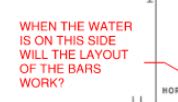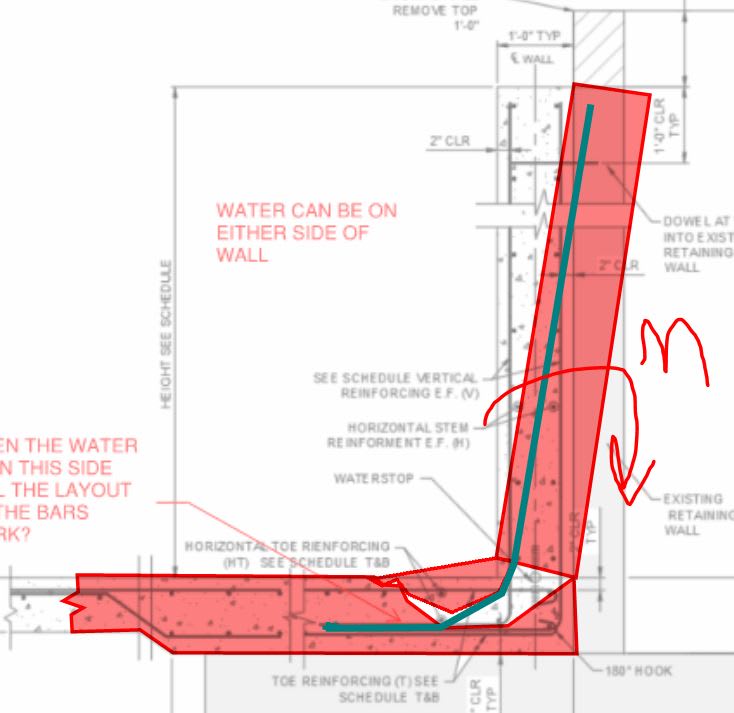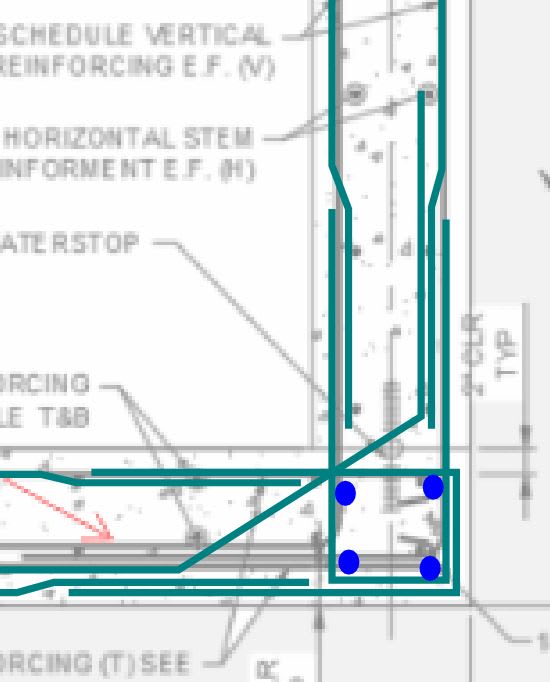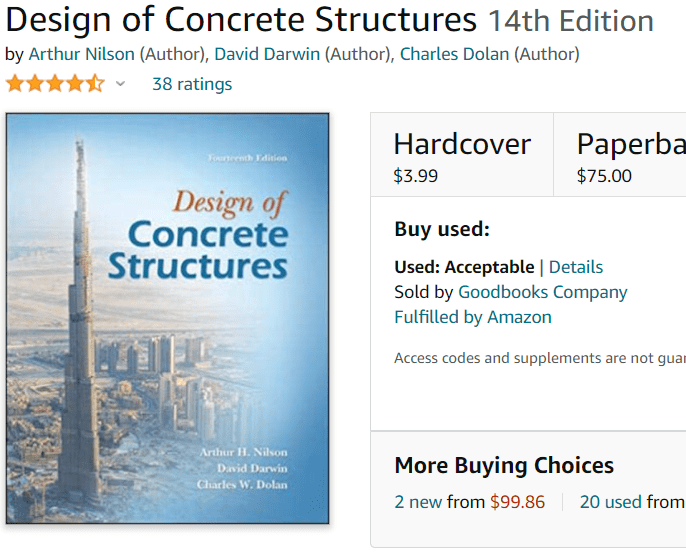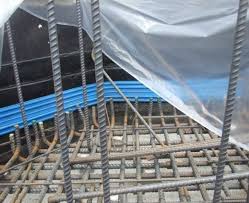Hello everyone,
I have a retaining wall 50 feet in length and around 7' high that will be going up against an existing retaining wall. It will be now holding back water that can be on either side. I will not be using the existing wall to take any of the loads but it will not be removed. Therefore, the retaining wall will be L shaped. It is also in seismic zone D so I am checking ACI 350.3 for rectangular tank design even though this will work more like a retaining wall until you get to the corners. Also, I have shown the typical corner detail--any thoughts on what else I need to consider for either layout? I am putting it into a program with the bottom of the wall fixed and comparing the sides fixed with the sides pinned to see what loads might develop there. Any thoughts on what else I need to be aware of would be appreciated. Thanks for any help.
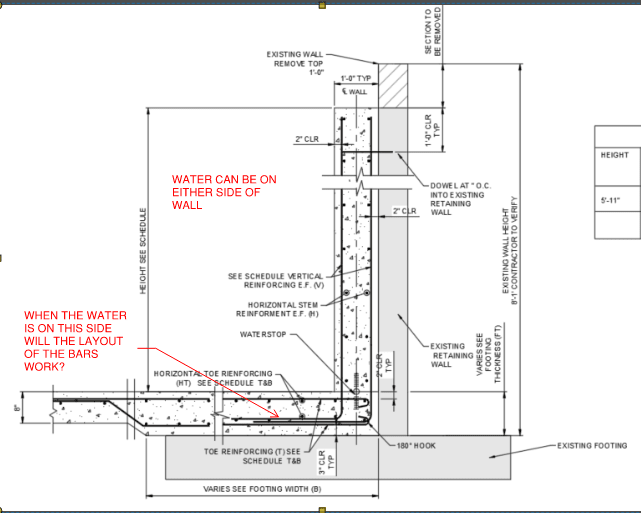
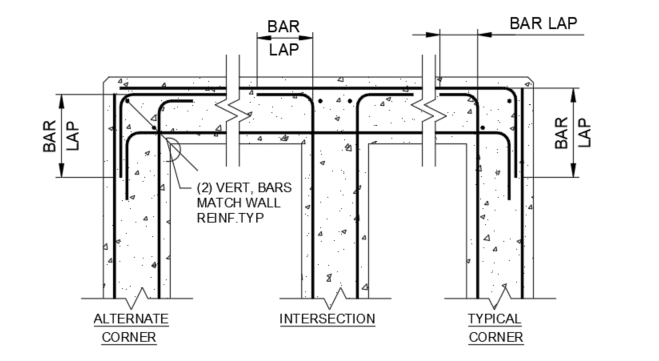
I have a retaining wall 50 feet in length and around 7' high that will be going up against an existing retaining wall. It will be now holding back water that can be on either side. I will not be using the existing wall to take any of the loads but it will not be removed. Therefore, the retaining wall will be L shaped. It is also in seismic zone D so I am checking ACI 350.3 for rectangular tank design even though this will work more like a retaining wall until you get to the corners. Also, I have shown the typical corner detail--any thoughts on what else I need to consider for either layout? I am putting it into a program with the bottom of the wall fixed and comparing the sides fixed with the sides pinned to see what loads might develop there. Any thoughts on what else I need to be aware of would be appreciated. Thanks for any help.



